Fast, practical, very tasty: pesto is the par excellence solution for dinner, a salvation for impromptu dinners and a delight on hot days, when you have little desire to be stoveside but don't want to give up a good plate of pasta. Be it the classic Genoese pesto with basil and pine nuts or the red one from Trapani, it doesn't matter: the sauces made with a mortar and pestle (the use of the immersion blender is not recommended because the overheated blades could blacken the cream) are one better than the other, perfect both for seasoning pasta (hot or for pasta salad), for creating original canapes and bruschetta, or for enriching savoury fillings.
History and variations of pesto in Italy
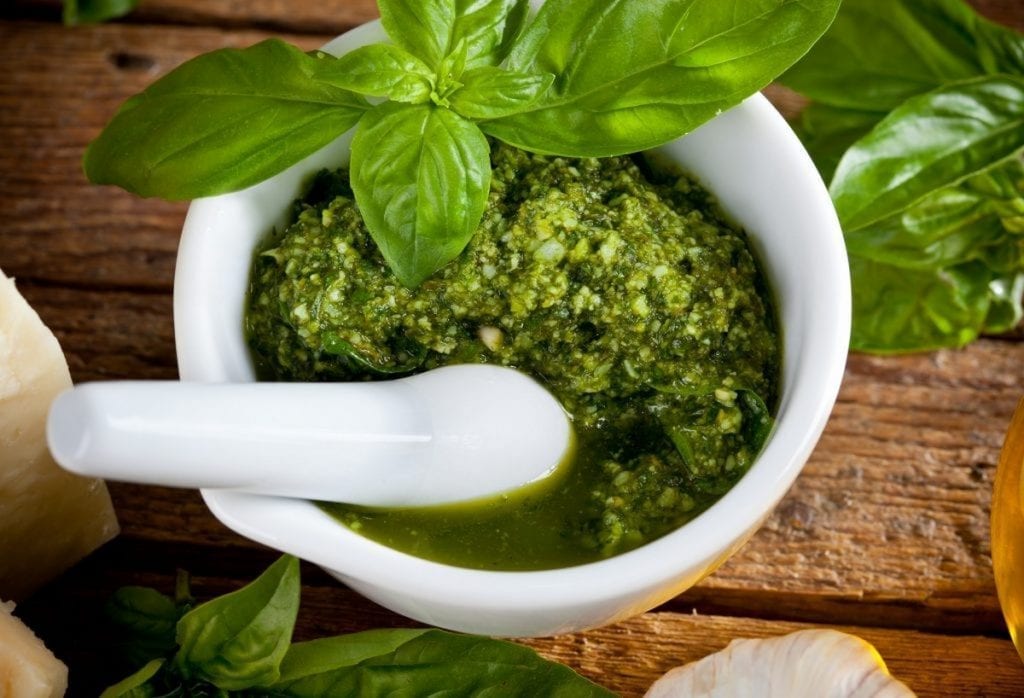
Pesto alla genovese
Present in every Italian pastry, pesto alla genovese, is a pasta condiment that's used cold directly on cooked pasta. To prepare it you need a good dose of dexterity and familiarity with the tools - a marble mortar and a wooden pestle - but there is no codified method for making it. Obviously, quality ingredients are a must: extra virgin olive oil, basil, parmigiano, Fiore Sardo, pine nuts, garlic. Ancient ancestor of the recipe is the Roman moretum, a mix of herbs, pecorino cheese, salt, olive oil and vinegar, even if the first written traces date back to the 19th century, with the volume "The true Genoese cook" by Emanuele Rossi, who mentions the sauce for the first time. But there are also those who believe that this is an evolution of the aggiada (in Genoese dialect), made with garlic, breadcrumbs, olive oil, wine and vinegar, usually used on fish. The ideal combinations? Pasta - trofie and trenette in primis, with potatoes and green beans - lasagna, timbales, rustic peis and minestrone.
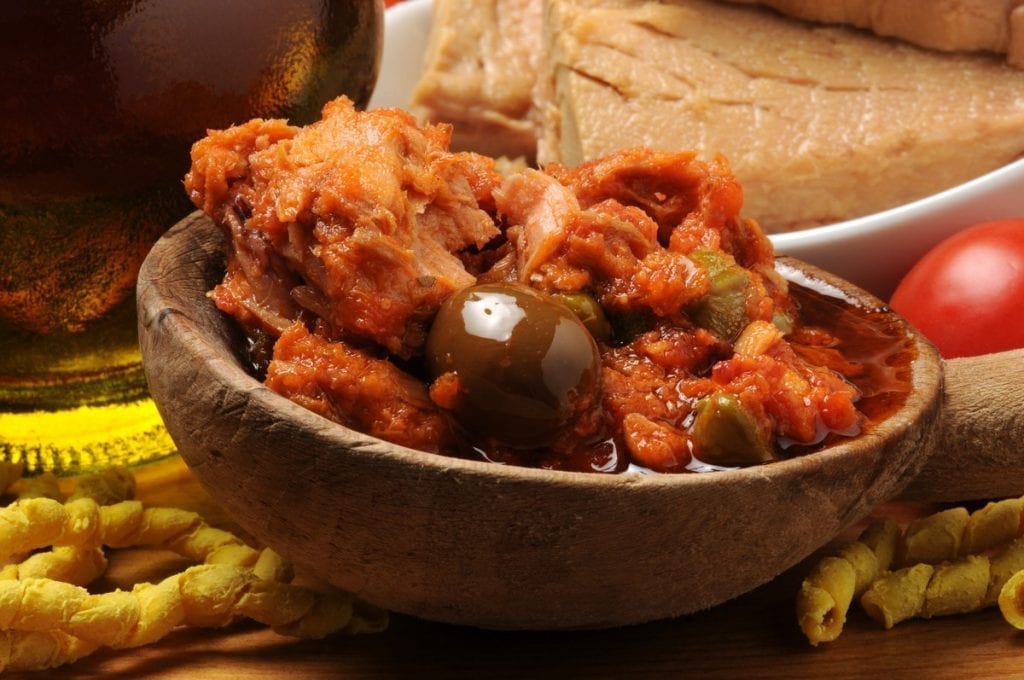
Pesto alla trapanese
Another famous pesto is the tomato-based one typical of Trapani. An ancient recipe that was born in the ports of Trapani, where Genoese ships from the East once landed, carrying products and preparations with them. The people of Trapani modified the pesto recipe of the Ligurian sailors by replacing the ingredients with the specialties of their territory, namely tomato, almonds, pecorino cheese, red garlic and basil. All pounded in a mortar and used to flavour the busiate, a typical shape of local pasta made with water and flour, a sort of perforated spaghetti obtained by rolling dough ropes around a special metal rod.
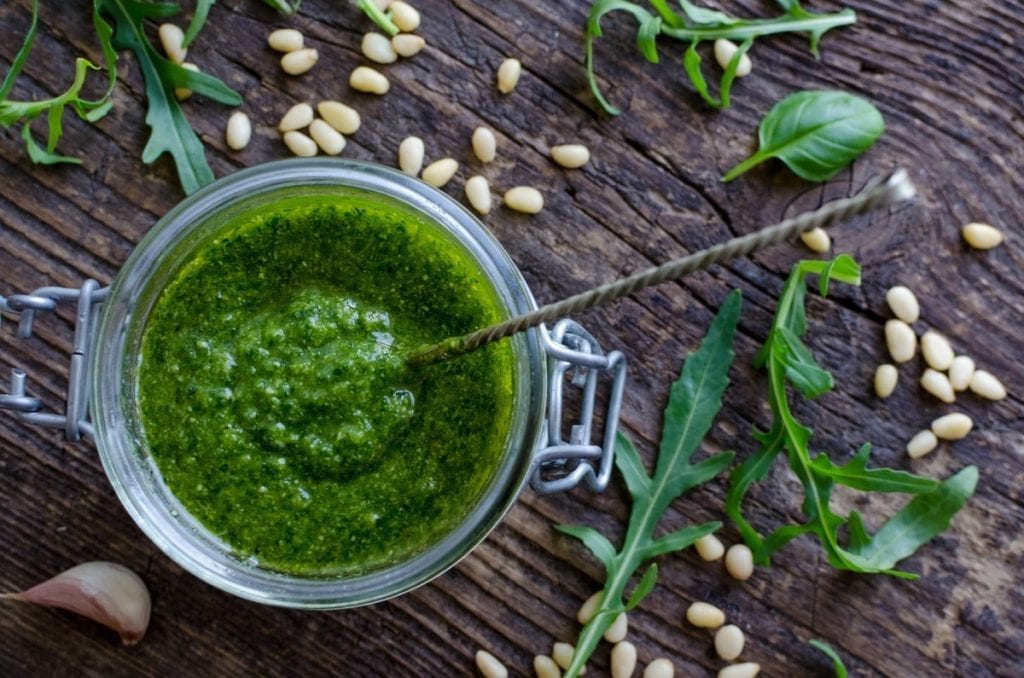
Arugula pesto
An alternative green variant to the classic Genoese basil pesto is the one made with arugula, boasting a more intense and slightly bitter flavour. Originating in the Mediterranean area, arugula is a plant used in the kitchen since ancient times, particularly appreciated by the Greeks for its digestive properties and considered a powerful aphrodisiac by the Romans. Legend has it that in the Renaissance it was forbidden to cultivate it around monasteries, for fear that the monks might abandon the vow of chastity after tasting it. Today there are many uses in the kitchen, from a simple side dish to ravioli filling with ricotta and herbs, but also a fresh dressing prepared with mortar and pestle, together with extra virgin olive oil, pine nuts, Grana Padano, Pecorino cheese, salt and garlic.
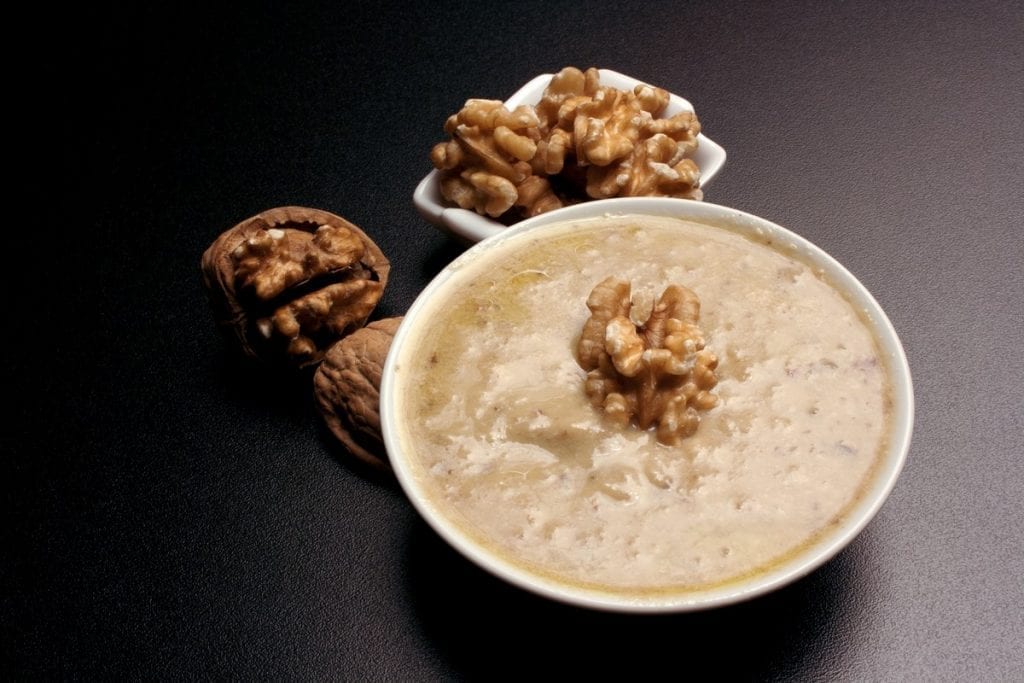
Walnut sauce
Delicious cream that never disappoints, perfect to dress any type of dish but born with a specific purpose: to complete the recipe for pansoti, Ligurian ravioli with the typical bulging shape, and made with a mixture of water, flour and white wine. The stuffing is preboggion - typical mixture of wild herbs - ricotta and parmigiano. A dish officially presented in '61 at a gastronomic festival in Nervi, but whose origins are much older and closely related to the feast of San Giuseppe, in the time of Lent fasting, a time when the Ligurians celebrated the table with a plate of lean ravioli. But let's go back to the sauce: it's a white cream made with pounded walnuts, extra virgin olive oil, garlic, salt and bread softened in milk, also used for other pasta shapes. Before starting the pounding procedure, however, it's necessary to clean the walnut meats, scalding them in boiling water and peeling the husk off one by one, manually.
Classic Pesto recipe
Ingredients
80 g. fresh basil (preferably Basilico Genovese DOP)
1 garlic clove
2 tbsp. pine nuts
2 heaped tbsp. pecorino sardo, grated
4 tbsp extra virgin olive oil from Liguria
Salt to taste
Pluck the basil leaves off the stems, wash and pat dry. Put them in the mortar (or in the blender, although blending oxidizes the basil) and add the garlic clove, trimmed of its interior sprout, the pine nuts, the cheese and half of the oil. Pound or blend until the ingredients have turned into a creamy mixture. If you are using the blender, to avoid heating the pesto, keep the speed low and pulse at intervals. At the end, pour the pesto into a small bowl and mix the rest of the olive oil.
Walnut sauce recipe
100 g. peeled walnuts
1 ball the size of an egg of unseasoned breadcrumb
1 garlic clove
2 tbsp milk
3 tbsp extra virgin olive oil
Salt to taste
Dip the walnut meats in boiling water for a few minutes, then peel off the brown husk. Spread them on a cloth and let them dry well. Put the peeled walnuts in the mortar together with the breadcrumb soaked in water and squeezed, and a pinch of salt, then pound until the ingredients have turned into a thick and creamy paste. When using it to dress pasta, dilute the sauce with a little pasta cooking water.
by Michela Becchi

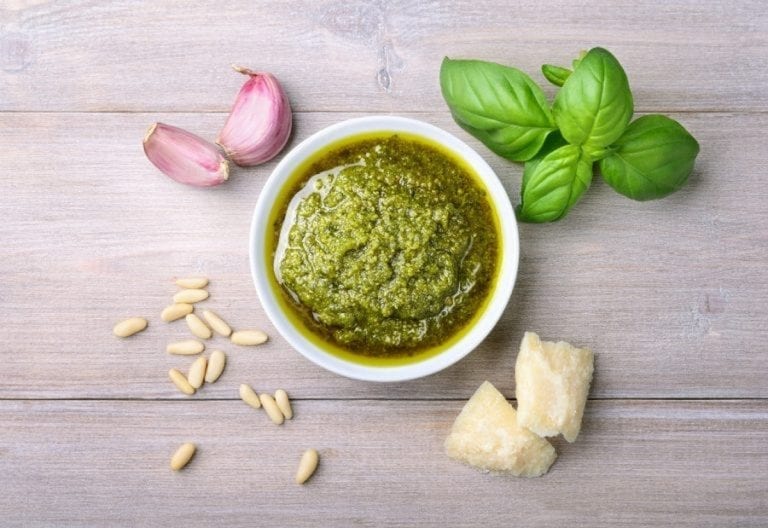
 US tariffs: here are the Italian wines most at risk, from Pinot Grigio to Chianti Classico
US tariffs: here are the Italian wines most at risk, from Pinot Grigio to Chianti Classico "With U.S. tariffs, buffalo mozzarella will cost almost double. We're ruined." The outburst of an Italian chef in Miami
"With U.S. tariffs, buffalo mozzarella will cost almost double. We're ruined." The outburst of an Italian chef in Miami "With US tariffs, extremely high risk for Italian wine: strike deals with buyers immediately to absorb extra costs." UIV’s proposal
"With US tariffs, extremely high risk for Italian wine: strike deals with buyers immediately to absorb extra costs." UIV’s proposal Meloni: "Tariffs? If necessary, there will be consequences. Heavy impact on agri-food sector"
Meloni: "Tariffs? If necessary, there will be consequences. Heavy impact on agri-food sector" The Government honours the greats of Italian cuisine, from Bottura to Pepe. Massari: "Thank you, Meloni, the only one who listened to us"
The Government honours the greats of Italian cuisine, from Bottura to Pepe. Massari: "Thank you, Meloni, the only one who listened to us"






